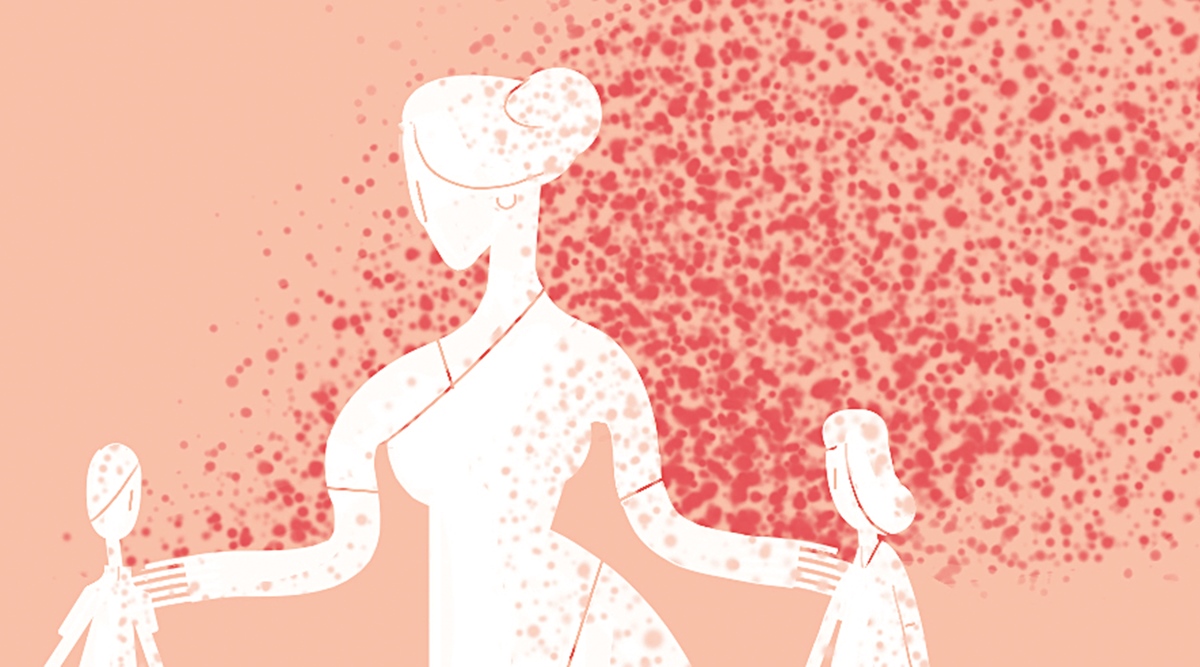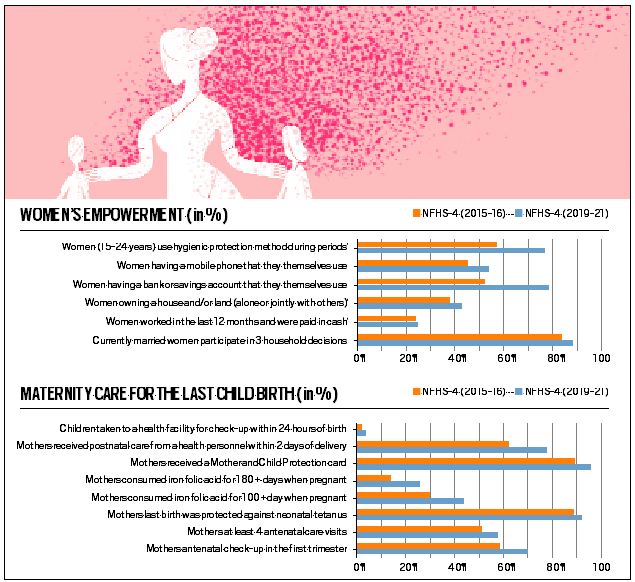More than half of all women and children in india are anemic, and that number has increased in the last three years. Between 2005 and 2015, anemia decreased in India, albeit marginally. But recent data from the National Family Health Survey (NFHS-5) shows a reversal of those gains: Anemia rates increased from 53% to 57% in women and from 58% to 67% in children in 2019-21.
The WHO defines anemia as a condition in which the number of red blood cells or the concentration of hemoglobin within them is lower than normal. This compromises immunity and impedes cognitive development.
What could be causing this dire result?
The breadth of the NFHS survey allows us to investigate factors traditionally used to explain the prevalence of micronutrient outcomes such as anemia. Grain-focused diets, with relatively lower consumption of iron-rich food groups such as meat, fish, eggs, and dark green leafy vegetables (DGLF), may be associated with higher levels of anemia. However, the percentages of children and women consuming iron-rich food groups have increased from NFHS-4 to NFHS-5. For example, the proportion of women consuming DGLF increased from 49% to 54%, meat from 1.2% to 1.5%, eggs from 3.2% to 4.8%, and fish from 4.18 % to 4.32%. . Similarly, the percentage of children consuming an adequate diet has increased from 9.6% to 11.3% and those who are exclusively breastfed (under six years of age) has increased from 54.9% to 63.7% from NFHS-4 to NFHS-5.
High levels of anemia are also often associated with underlying factors such as poor water quality and sanitation conditions that can negatively affect iron absorption in the body. However, both factors improved from NFHS-4 to NFHS-5. The percentage of the population living in households using improved sanitation facilities increased from 48.5% to 70.2%, while the percentage of households with access to improved sources of drinking water improved from 94.4% to 95, 9%.
Women’s empowerment is another factor that can play an important role in determining the quantity and quality of food intake within the household. Women’s ownership of assets (such as land or a house), the ability to make decisions about the use of income, access to resources such as savings or credit, and participation in key household decisions can translate into increased awareness of and access to diverse, nutritious diets. But women’s empowerment in such domains has also improved from NFHS-4 to NFHS-5, suggesting that women’s decision-making alone cannot explain the increase in anemia.
Finally, the provision of health and nutrition interventions plays an important role in the prevalence of anemia. But women’s folic acid intake during pregnancy and access to prenatal care has improved in the last five years. It is surprising, then, how anemia rates have increased not only in mothers but also in children under the age of five.
The NFHS anemia data is an anomaly for several reasons, as several factors that may explain changes in anemia rates have improved since the NFHS-4. Also, unlike anemia, all other important outcomes of undernutrition, for example, stunting (low height-for-age), wasting (low weight-for-height), and underweight (low weight-for-height) age) have improved in the past. four to five years. It is imperative that this abnormal trend in anemia is investigated, understood, and addressed as soon as possible.
We also have to wonder if this trend might reflect differences in the data between NFHS-4 and NFHS-5. Or are there some measurement issues affecting the results? How accurately does the current method used to assess hemoglobin concentrations compare to others that are available? More nuanced measurement may help our understanding of anemia.
It is also pertinent to invest in a better understanding of the various causes behind this increase in anemia. At a minimum, we should go beyond hemoglobin to include other iron-specific biomarkers, such as serum ferritin, as well as markers of inflammation, to identify the role of iron deficiency as a driver of anemia. At the same time, measurement of anemia must take into account non-ferrous nutritional deficiencies, such as vitamin B12 in the case of India, and screening for genetic blood disorders, such as thalassemia and sickle cell anemia. Similarly, expanding the NFHS data on food consumption to include information on serving sizes and frequency of consumption can help us accurately estimate the intake of various micronutrients and compare it to the recommended intake.
Rising numbers of anemia make it almost impossible to meet the targets of the Anemia Mukt Bharat programme: a reduction of 3% per year in all age groups from 2015-16 to 2022. India is also behind in achieving the global nutrition target . for anemia in women of reproductive age: a 50 percent decrease from the 2012 baseline by 2030.
We hope that this discussion of the rise in anemia will serve as a starting point for rigorous research and informed policymaking that engages diverse stakeholders such as public health professionals, program implementers, policymakers, and other experts in this field. The data on anemia tells us that something has gone wrong. It is critical that we find out what has changed and move quickly to address it.
Gupta is a Research Economist and Seth is a Consultant at Tata-CornellInstitute (TCI), Cornell University
!function(f,b,e,v,n,t,s)
{if(f.fbq)return;n=f.fbq=function(){n.callMethod?
n.callMethod.apply(n,arguments):n.queue.push(arguments)};
if(!f._fbq)f._fbq=n;n.push=n;n.loaded=!0;n.version=’2.0′;
n.queue=[];t=b.createElement(e);t.async=!0;
t.src=v;s=b.getElementsByTagName(e)[0];
s.parentNode.insertBefore(t,s)}(window, document,’script’,
‘https://connect.facebook.net/en_US/fbevents.js’);
fbq(‘init’, ‘444470064056909’);
fbq(‘track’, ‘PageView’);
.

